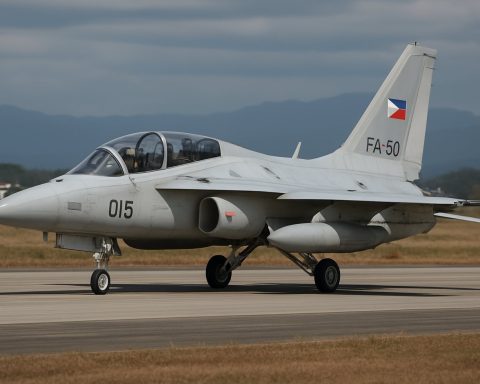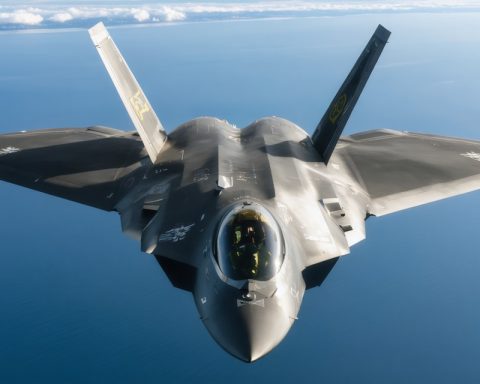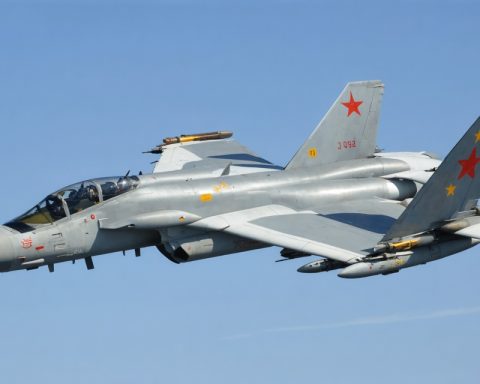- By 2035, fighter jet cockpits will transform dramatically, moving from cluttered instrument panels to sleek, augmented reality interfaces.
- Key advancements include intuitive control systems, augmented reality visors, and haptic feedback in joysticks, enhancing pilot interaction with aircraft.
- The EPIIC project, backed by Airbus and the European Defence Fund, leads this transformation with 27 partners focusing on technologies like AI and autonomous drones.
- Innovative controls such as voice, gesture, and eye-tracking systems allow seamless plane-pilot interaction for complex scenarios.
- Adaptability of design ensures future cockpits are independent of aircraft, promoting longevity and versatility against obsolescence.
- The new cockpit paradigm aims to enhance situational awareness, reduce pilot stress, and streamline decision-making.
- Ultimately, this evolution signifies deeper integration of humans and technology, blurring the lines in modern warfare.
Step into the cockpit of a fighter jet in the year 2035, and the scene might feel like something out of a sci-fi movie. Flashing back to today’s crowded cockpits, bristling with instruments and screens, one can hardly believe the stark transformation that lies ahead. Imagine a cockpit that feels almost empty, free of the overwhelming clutter, only to come alive with cutting-edge interfaces tailored to the needs of a next-generation fighter pilot.
Beyond the traditional throttles and joystick, which remain a comforting constant amid change, the new cockpit experience primarily revolves around augmented reality and intuitive control systems. Picture the pilot interacting seamlessly with the plane, a symphony of gestures and spoken commands, as if the aircraft itself were an extension of the pilot’s own senses. This transformation isn’t just about stripping away the old; it’s about fundamentally rethinking what a cockpit can be.
The European project known as EPIIC, backed by Airbus Defence and Space and supported by the European Defence Fund, heralds this brave new world. Collaborating with 27 companies and academic institutions, EPIIC aims to reimagine fighter cockpits to keep pace with rapidly evolving technologies like AI, autonomous drones, and hypersonic missiles while keeping pilots firmly in command.
Imagine a future where pilots don augmented reality visors that overlay crucial information directly onto the world outside. These innovations promise to offer contextual data through projected, customizable displays that adjust on the fly. The pilot could be navigating a complex battle scenario while conversing with the plane itself—issuing commands through voice, gestural cues, or even a quick glance at a panel, interpreted by advanced eye-tracking systems.
The integration of haptic feedback into the joystick further elevates the tactile connection with the aircraft. Vibrations or controlled resistance can convey vital flight information instantly, allowing pilots to make split-second decisions without looking away from their surroundings. The underlying philosophy is simple yet profound: let the pilot maintain hands on the throttle and joystick, minimizing distractions and maximizing focus.
The genius of EPIIC’s approach lies not only in its technological wizardry but also in its adaptability. By ensuring that future cockpits remain independent of the specific aircraft they’re installed in, the design can evolve to accommodate tomorrow’s unknown mission requirements, protecting investments from obsolescence.
Ultimately, this endeavor is not just about creating an ultra-modern cockpit. It’s about crafting an environment where the pilot’s situational awareness is heightened, stress is reduced, and decision-making is streamlined. As the thrum of jet propulsion sends these high-tech fighters streaking across the sky, the true innovation lies within—offering a glimpse of how humans have begun to integrate seamlessly with machines, heralding a future where the boundaries between man and technology become increasingly blurred.
The transformation speaks volumes about resilience and adaptability, paving a path to a future where pilots and their aircraft become a unified force, navigating the ever-changing theater of modern warfare with precision and ease. Here, the cockpit becomes not merely a control center, but a trusted ally in the skies.
Fighter Jet Cockpits of the Future: A High-Tech Leap to 2035
The Future of Fighter Jet Cockpits: What to Expect by 2035
As the world races towards technological advancements, the cockpit of the future fighter jet is evolving from a cluttered array of instruments to a streamlined, intuitive interface. The European project EPIIC, spearheaded by Airbus Defence and Space with the support of the European Defence Fund, is at the forefront of reimagining this transformation. By 2035, we can expect fighter jet cockpits to embrace augmented reality, AI integration, and advanced haptic feedback systems, revolutionizing the way pilots interact with their aircraft.
Key Features and Technologies
1. Augmented Reality Visors:
– Pilots will wear headsets or visors that project important information directly into their field of view. This technology allows pilots to maintain situational awareness even during complex maneuvers, providing real-time data about threats, targets, and navigational prompts without having to look away from their surroundings.
2. AI and Autonomous Systems:
– AI systems will act as virtual co-pilots, processing vast amounts of data to assist with decision-making. By delegating routine tasks to AI, pilots can focus on critical mission objectives.
3. Gestural and Voice Commands:
– Interaction with the aircraft will become more intuitive, using vocal commands and gestures. This minimizes the need for physical controls and allows pilots to operate the aircraft seamlessly, as if it were an extension of their body.
4. Haptic Feedback in Controls:
– Joysticks and throttles will be equipped with haptic feedback, allowing pilots to “feel” the aircraft’s status through vibrations and resistance. This sensory input reduces the need for visual cues and enhances awareness.
5. Modular Design for Adaptability:
– Future cockpits will be modular, enabling them to adapt to different aircraft types and mission requirements. This design approach ensures longevity and reduces the risk of technological obsolescence.
Real-World Applications and Use Cases
– Enhanced Pilot Training:
The integration of AR and AI could revolutionize pilot training by simulating real combat scenarios, allowing for a safer and cost-effective training environment.
– Improved Mission Effectiveness:
Real-time data overlay and AI decision support can significantly increase mission success rates by optimizing strategies based on current and predictive analyses.
– Safer Skies:
By reducing cognitive load and enhancing situational awareness, these innovations help prevent accidents caused by pilot error, making for safer airspace.
Pros and Cons Overview
Pros:
– Increased situational awareness and faster response times.
– Enhanced pilot comfort and reduced fatigue.
– Modular and future-proof design.
– Improved mission success rates.
Cons:
– High initial development and integration costs.
– Extensive training required for pilots to adapt to new systems.
– Dependence on technology could pose risks in case of system failures.
The Road Ahead: Market Forecasts and Industry Trends
– Growth in Defense Budgets:
As international defense budgets expand, significant resources will be allocated to modernizing aviation technologies, including fighter jet cockpits.
– Rising Demand for Pilot Automation:
With the increasing complexity of modern warfare, automation within cockpits will be crucial. The demand for AI-driven aircraft systems is expected to surge.
– Collaboration and Innovation:
Industry leaders like Airbus and defense organizations globally are likely to collaborate on developing interoperable systems, setting standards for future cockpit designs.
Conclusion: Actionable Recommendations
– Invest in Training:
Pilots should begin training on augmented reality and AI integration early to ensure readiness when these technologies become standard.
– Stay Informed:
Defense and aviation professionals should stay updated on industry trends and technological advancements to leverage emerging opportunities.
– Embrace Adaptability:
Military organizations should focus on modular and adaptable technology solutions, ensuring that investments remain relevant over time.
Stay ahead in the skies by embracing the next generation of fighter jet cockpit technologies that promise to transform air combat. If you want to learn more about exciting advancements in aerospace and defense, visit the Airbus website.
Explore the future with innovation, technology, and strategic readiness—for a safer, smarter world in the skies.











